On the evolution of observation and fire control devices T-34-76
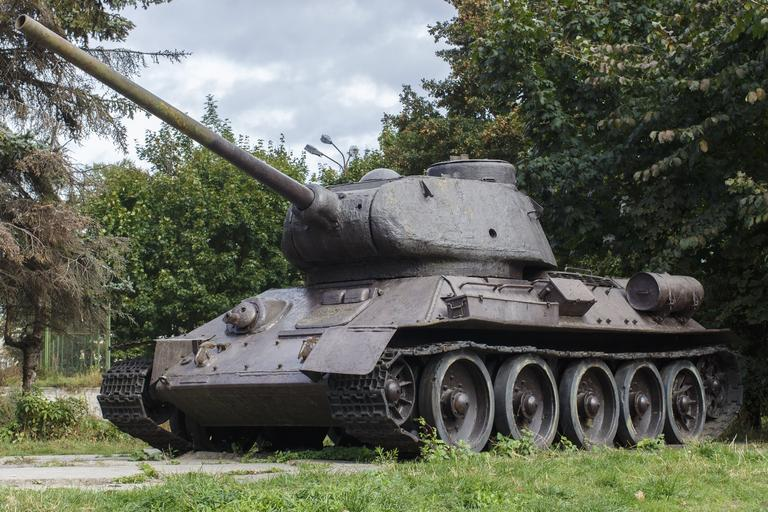
In the cycle dedicated to the T-34, I have already touched on this issue. But, to my deep regret, I did not fully disclose it. Moreover, I made a number of mistakes, which I will try to correct now. And I'll start, perhaps, with the very first serial version of the thirty-four.
T-34 model 1940-1942
The easiest way to describe the observation devices of the driver and the radio operator. The first had as many as three periscopic devices, which were very inconvenient to use. And the radio operator had only an optical machine-gun sight and was practically a "blind" crew member. There are no discrepancies in the sources here. But then ...
Let's start with something more or less clear. The T-34 cannon (both the L-11 and the F-34) was equipped with two sights at once.
One of them was telescopic. That is, in fact, it was a "spyglass", whose sighting axis at zero scale settings is parallel to the axis of the barrel. Of course, this sight could be used exclusively for aiming the gun.
But there was another sight - a periscope, with which the commander could not only direct the main weapon tankbut also "admire the surroundings". This sight could be rotated like a periscope 360 degrees. At the same time, the position of the head of the tank commander remained unchanged. That is, only the "eye" of the sight rotated, which in the stowed position was closed with an armored cover, and in the combat position - the cover, respectively, was thrown back. This sight was located in a special armored capsule on the roof of the tower, just in front of the hatch.
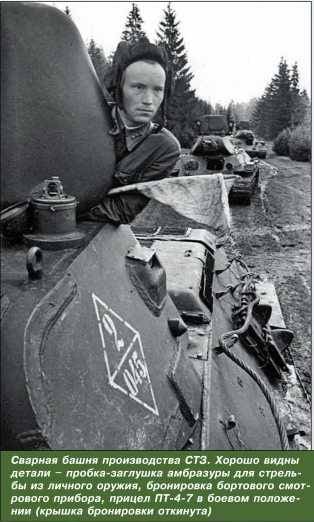
According to Baryatinsky, the telescopic TOD-34 and the periscopic PT-11 were installed on the first T-6s with the L-6 cannon. For thirty-fours with an F-34 cannon - TOD-7 and PT-7, respectively. It is not entirely clear what product is meant by the PT-7 sight. Is it the abbreviated name PT-4-7, or an earlier version?
More or less reliably, it can be argued that the device had an increase of up to 2,5x and a field of view of 26 degrees. The very first sight PT-1 and PT-4-7 possessed such characteristics, so it should be expected that intermediate models did not differ from them.
Very often in publications one has to read that the commander of the T-34 had a command panorama of the PTK or PT-K. And that this panorama was just intended for a circular view, but due to an unfortunate location (behind and to the right of the commander), it was not possible to fully use its capabilities, and that it gave an overview of about 120 degrees forward and to the right of the tank. And therefore, the installation of the PT-K was subsequently abandoned.
Apparently, this is a misconception. It is precisely known that the early thirty-fours had a kind of all-round observation device located directly in the turret hatch.
But this device has nothing to do with PT-K. And the point is this. Unfortunately, there is little information about observation devices of those years, but in the article by A.I. Abramov's "Evolution of tank sights - from mechanical sights to fire control systems" states that:
However, both in the photo and in the figures, we see clear differences between one device from another. Further I.G. Zheltov, A. Yu. Makarov in his work "Kharkov thirty-fours" indicate that at a meeting held on February 21, 1941 at the chief engineer of plant No. 183 S.N. Makhonin, the decision was made:
That is, not even all thirty-fours armed with an L-11 cannon received a survey device located on the hatch. But story brought to us photographs of tanks, which had both PT-7 (PT-4-7?) and PTK.
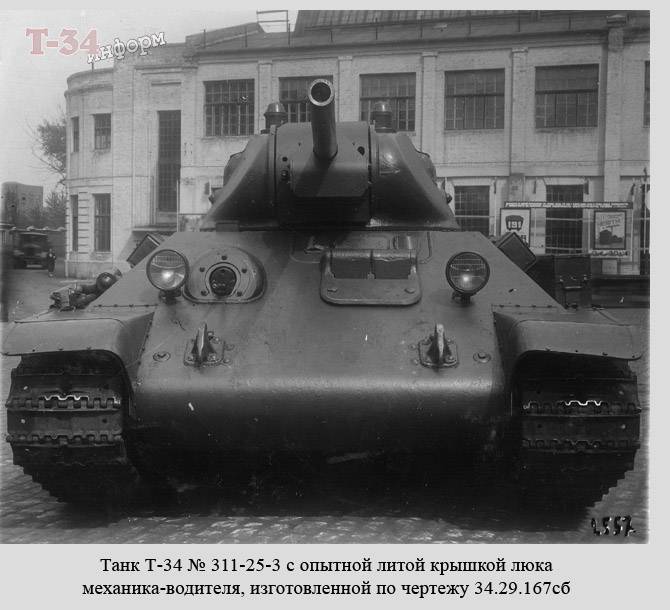
There are also pictures showing in detail what is what.
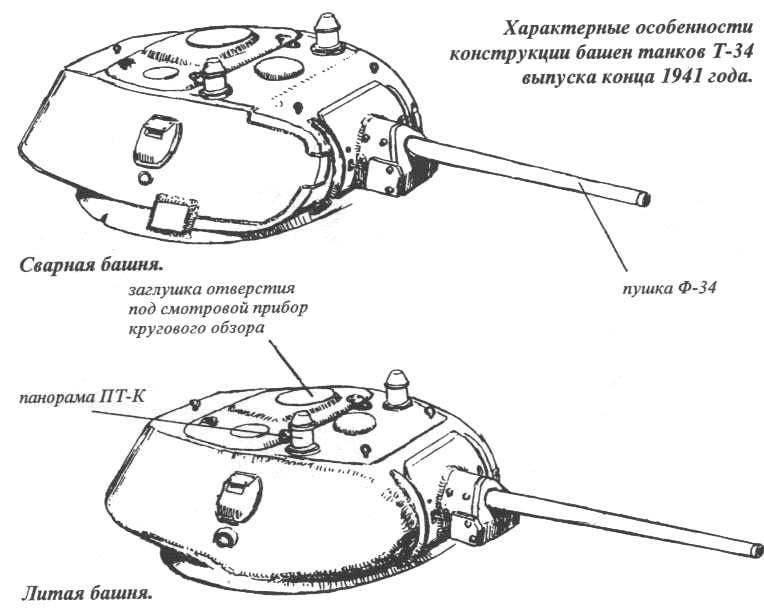
Thus, it should be said that the PT-K was not intended at all for the commander, but for the crew member who was in the tower on the right, that is, the loader.
I must say that equipping the tank with two periscopic devices located on the roof of the tower and allowing observation at 360 degrees (although, as mentioned above, the "field of view" of each device was limited to 26 degrees) was a very good solution for T 34.
The commander's cupola on the "original" turret of the thirty-four obviously did not "get up" in any way - if for the commander it was not even possible to provide access to the all-round view device on the hatch, then how could he climb into the turret? Of course, the loader's PT-K could not radically solve the problem of situational awareness. It was nothing more than a palliative, but a very, very useful palliative.
Alas, the bulk of thirty-fours were deprived of this useful innovation. In a huge number of photographs of the war years, we do not see the characteristic "armored column" for the PT-K.
Why?
Perhaps the answer lies in the difficulties of mass production of tank sights, which is why our industry simply did not have time to make the required amount of PT-K. Moreover, in design they were similar to periscopic sights. Another thing is interesting - it is very likely that some of the tanks instead of PT-K received ... all the same "all-round observation device" once "driven out in shame" from the turret hatch.
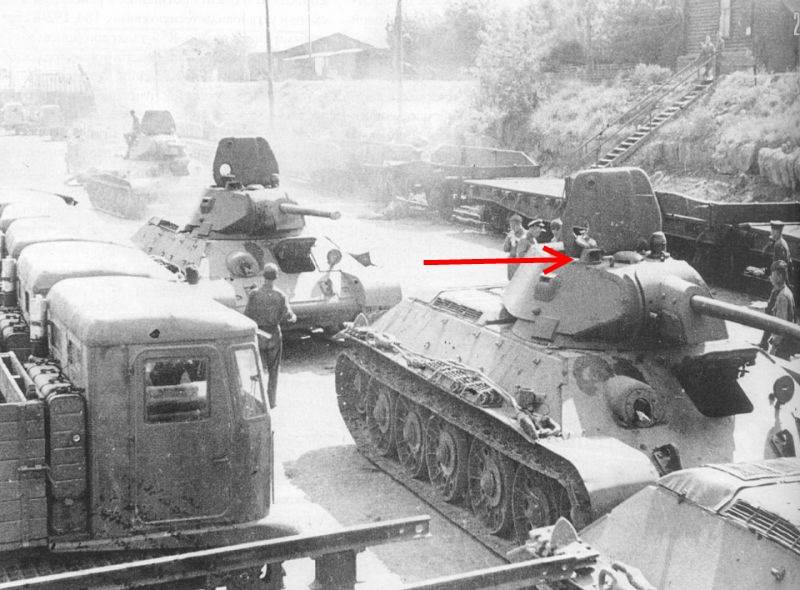
But still this is an exception to the rule, and the bulk of 1941-1942 thirty-fours. the release was completed exclusively with the PT-4-7, which actually became the only somewhat effective observation device for the tank commander. And, of course, it wasn't enough. Yes, in addition to the PT-4-7, the T-34 tower was equipped with two more viewing devices on the sides of the tower, but they were extremely inconvenient in operation and did little in terms of visibility.
Thus, the initial design of the T-34 implied the following observation devices listed below.
For the tank commander: an all-round observation device located in the turret hatch, a PT-6 periscopic sight, a TOD-6 telescopic sight and two viewing devices located on the sides of the turret.
For the loader: two viewing devices on the sides of the tower, which he could use in conjunction with the commander.
For the driver: 3 periscopes.
For the radio operator: an optical machine gun sight.
At the same time, the machine-gun and gun telescopic sights were completely unsuitable for observing the battlefield. The mechanic drive's periscopic devices were inconvenient. Observation devices on the sides of the tower are also extremely inconvenient. And the all-round observation device was removed from the tank. As a result, the situational awareness of the T-34 was provided, in fact, only by the PT-6 periscope sight.
Alas, until 1943, this situation remained practically unchanged for most thirty-fours. And only a few of them received an additional periscope device - the PT-K command panorama for the loader.
On the one hand, this, of course, was a big step forward, since in a situation where it was not necessary to conduct artillery fire, two people could already survey the battlefield, and not one. But you need to understand that the PT-K as a command panorama was still "not very", as it had a very limited field of view - 26 degrees.
T-34 model 1943
In 1943, the situation changed significantly. Often in publications you can read that in addition to existing devices, the following appeared.
For the tank commander: a commander's cupola with 5 sighting slots, an MK-4 periscope observation device located in the hatch, a PTK-4-7 periscopic sight, a TMFD-7 telescopic sight, two sighting slots (in place of observation devices along the sides of the tower).
For the loader: MK-4 periscope observation device, two sighting slits (in place of observation devices on the sides of the tower).
For the driver: two periscopic observation devices.
For the radio operator: a dioptric machine gun sight.
As for the radio operator and the replacement of observation devices in the sides of the tower with sighting slots - this information is beyond doubt. It is not entirely clear when the new periscopic observation devices appeared at the mekhovda. Perhaps this happened not in 1943, but somewhat earlier? But the information about the presence of two MK-4, let's say, is somewhat exaggerated.
The problem lay in the same lack of optics, which is why some tanks were equipped with one MK-4 in the commander's cupola, and the loader never received anything. In other cases, apparently, the loader received an additional observation device, but it was not an MK-4, but the same PT-K command panorama.
And in some cases, the loader only had an imitation of an observation device. That is, there was a corresponding cutout in the roof of the tower (because this was the case according to the project), but the device itself was not - everything was installed instead of it, up to cutting the pipe.
How did the innovations of 1943 affect the situational awareness of the T-34 crew?
Let's start, again, with the obvious. The observation capabilities of the gunner-radio operator have practically not changed. But the work of the mechanic was significantly simplified, since the new periscopic devices were much more convenient than the previous ones. This is already a serious plus.
What did the T-34 crew get from the "top-equipment" of the commander's cupola and two MK-4s?
The capabilities of the loader have fundamentally improved. Now at his disposal was the excellent MK-4 - one of the best tank observation devices of the Second World War, copied by our specialists from the British device of the same name for the same purpose.
Of course, at the time of his immediate duties, the loader could not use it. But as soon as the enemy target was suppressed or destroyed, he was able to survey the battlefield. In fact, his review was limited only to the commander's cupola and "armored column" PT-4-7.
But with the tank commander, everything turned out not so unambiguously. On the one hand, he finally got at his disposal both the commander's cupola and the wonderful MK-4. On the other hand, how could he use them? If earlier it was inconvenient (and even almost impossible) for him to work even with an all-round viewing device located in the tower hatch on the very first thirty-fours?
That is, in the past it was not really possible to use the device located "right-back". But how was it now to operate with the turret, for which it was necessary to additionally change the position of the body and rise so that the eyes were at the level of the sighting slits?
It can be argued almost for sure that if this commander's cupola appeared on the tanks of the 1941 model, then there would be just as much sense from it (together with the wonderful MK-4) as from the all-round viewing device located in the hatch of the tower of the very first T -34. In other words, absolutely none. Just because
But on the tank of the 1943 model, the situation changed somewhat, thanks to the new design of the turret, the so-called "nut". Of course, when creating it, the designers were primarily guided by an increase in manufacturability, and not ergonomics. Nevertheless, the tower became wider, the angles of inclination of the armor plates were smaller. And, accordingly, the reserve volume is greater.
Therefore, the new tower has become a little more convenient for the crew, and, probably, using the commander's cupola in it has become, at the very least, possible. But, of course, I cannot give an unambiguous answer to this question - for this I would have to sit in the place of the commander of such a thirty-four.
In addition, it is known that in many cases both the commander's cupola and the MK-4 device installed on it were not used by the tank commander. Moreover, there are references to cases when the commander voluntarily parted with his MK-4, located on the upper hatch. And this device was rearranged by the crew to the loader. In cases where there was a corresponding hole in the roof of the T-34 turret, of course.
In general, the following can be assumed. In battle, the commander had no time for throwing from the commander's cupola to the sights, so he preferred to use the already familiar PT-4-7 sight, using the commander's cupola, only when there was no immediate threat to the tank. Or in cases where the enemy remained undetected through the periscope sight.
In other words, the capabilities of the commander's cupola and the MK-4 installed in it could not be fully used. But the loader's periscope device was much more useful in battle. That is why in some cases it was rearranged.
And the last.
In some publications, the opinion was expressed that on the T-34 of the 1943 model, the PT-4-7 periscope sight was installed motionless, that is, it did not have the ability to turn the eyepiece in the direction needed by the commander. This appears to be incorrect.
In the document "T-34 Guide", approved by the deputy. Chief of the GBTU of the Red Army, Lieutenant General of the Engineering and Tank Service I. Lebedev on June 7, 1944 (second revised edition), the description of the PT-4-7 directly states:
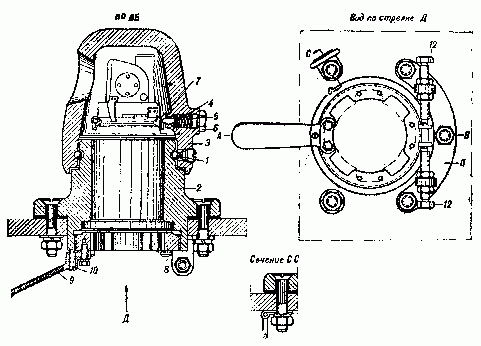
In general, it can be stated that on the T-34 of the 1943 model, thanks to the introduction of new observation devices, it was possible to significantly increase the situational awareness of the tank crew.
Yes, of course, the absence of a fifth crew member still had a negative impact.
But, it is obvious that in 1943 the thirty-four had already ceased to be "blind".
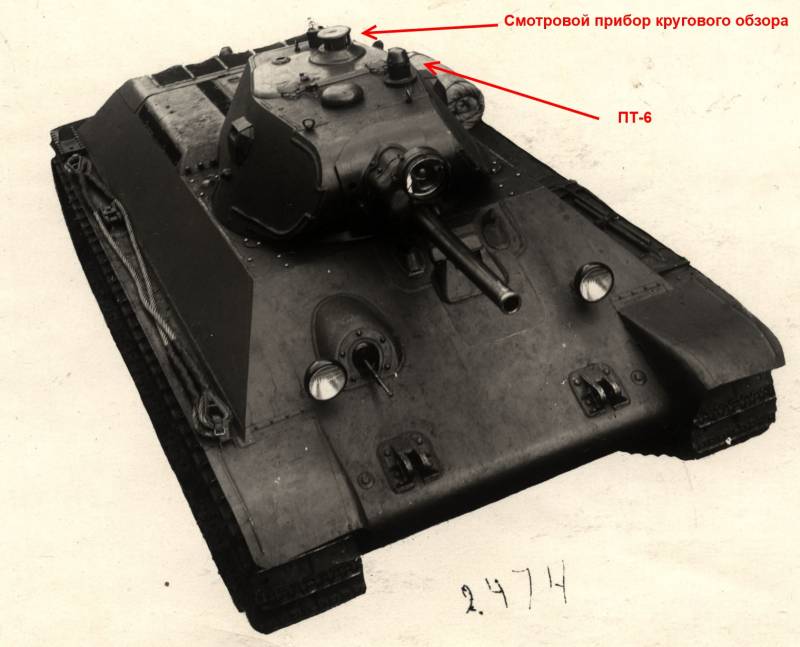
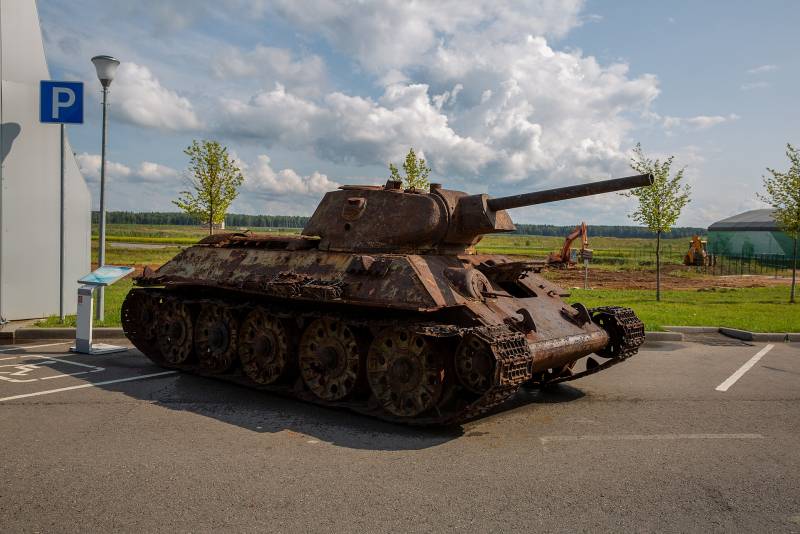
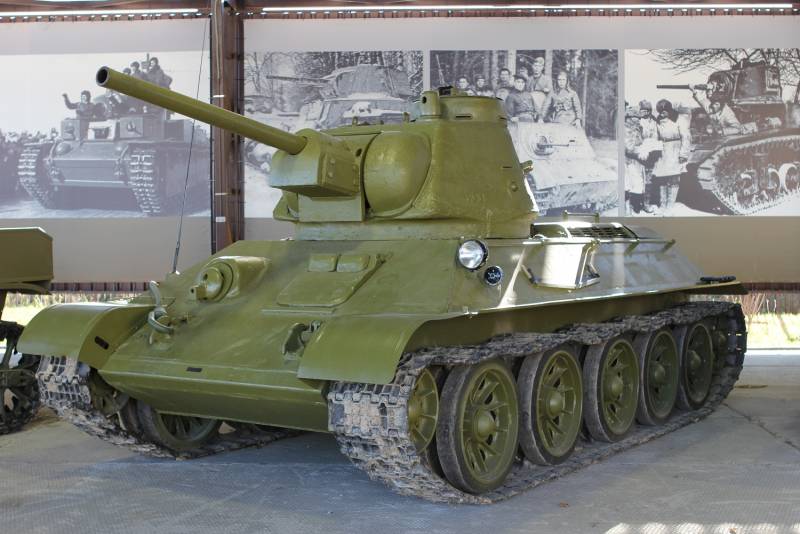
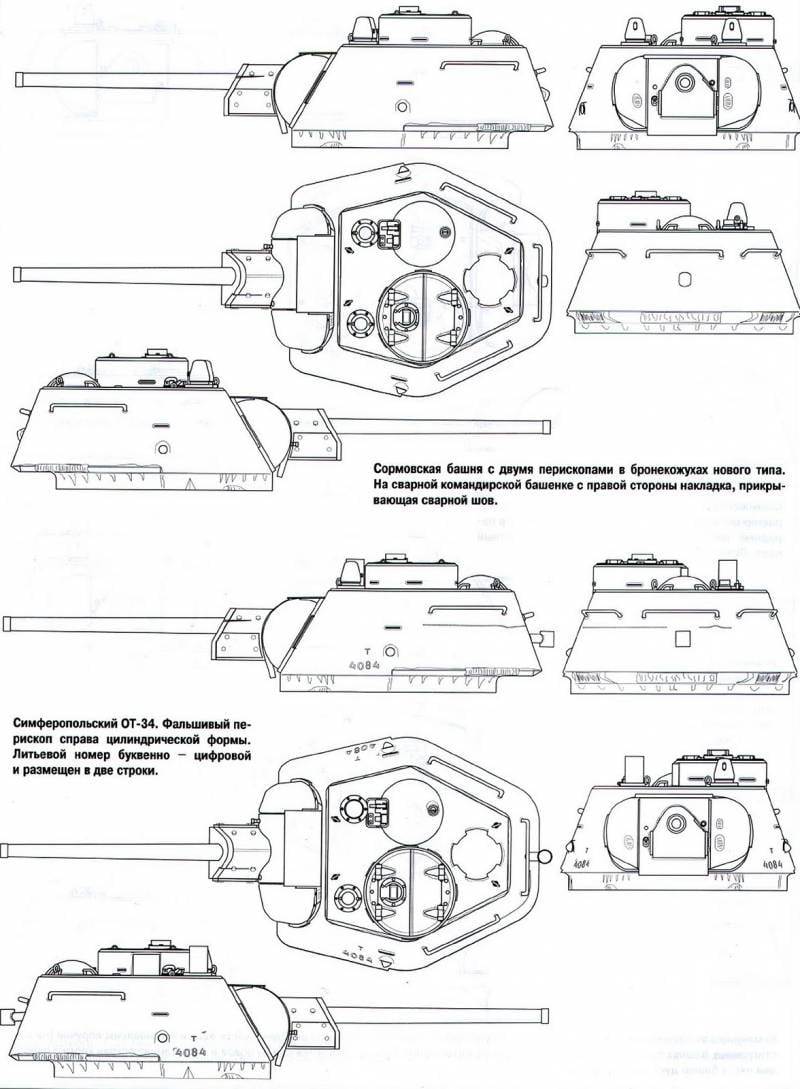
Information